|
Some Asian
menstrual products:
Japan:
Emil tampon, 1974 -
"Origami" tampon: Anshin
(Japan, 1977) Tampons, box, directions. Origami
applicator. (Tambrands gift,
1997) It's the same as Ortex Gold
and Cameo tampons.
Cellopon (Japan, 1968) Box,
instructions, tampons. No applicator. With a
discussion of the mutual
influence of European
and Japanese art & an example from Van Gogh.
Elldy (Japan) tampon with finger cots, box - ad in Junie magazine (October
1996).
Shampon Young stick tampon
(Japan, 1977)
Japanese pads and belts, early 20th
century: instructions
for making the so-called uma
(pony or horse, because it resembled in function the
device on horses to catch feces).
Ads for Japanese commercial menstrual belts from the early 20th century with a
comparison with the English source of the drawing:
Aubrey Beardsley, England's best artist (just my
opinion).
Early 20th century ads for Japanese menstrual belts, pads & underpants with some translation.
Thailand:
Thai magazine ad,
date?
China:
Chinese pad and belt
(2000)
Chinese pad, Anerle
Chinese panty pad, Huitlao
India:
Washable menstrual pads for women in Almora, Uttar Pradesh state, India, giving them more
freedom (1999).
Teaching girls in rural southern
Rajasthan about puberty, menstruation and how to
make washable menstrual pads.
More recent
information about menstrual management in India
with an article critical of
this museum.
Some tampon
curiosities: L & F [Lehn & Fink] Improved
Tampons (U.S.A., 1930s-1940s?) Box, instructions, some tampons.
From the company that made Lysol.
- Medical tampons mentioned
in newspapers, U.S.A., 1894-1921 - o.b. folder, Germany, early 1950s
(tells what o.b. means!)


|

MUSEUM OF MENSTRUATION AND WOMEN'S HEALTH
Pine menstrual tampons, Japan,
1977
Much of what I said about Emil tampons could
be written about this one, Pine. Both have
Western names written in a Western alphabet
as well as in a Japanese phonetic script. I
think this betrays the foreignness of tampons in
Japan; Japanese women seemed to
prefer pad-like
devices to soak up menstrual blood.
Both look very much like the Tampax of the time:
cardboard tubes & cotton plug (the
absorbing part), just like the near
contemporary British St
Michael tampon. All three avoided plastic delivery tubes
and super-absorbent material unlike the
ill-starred Rely
that appeared just a few years later.
But EMIL - sounds very un-Japanese to me
and male. This
could be the Japanese version of a Western
tampon.
The pine tree is a revered
part of Japanese culture.
The Japanese have developed or marketed
interesting tampons, including one with cots to protect the
fingers.
My knowledge of the Japanese language is
primitive but I've tried to point out some
interesting aspects of Pine. But read some Japanese
words and euphemisms associated with
menstruation.
Tampon directory.
Related products in
the column at left.
I thank the former
Tambrands, once maker of Tampax tampons,
for donating this box!
|
Below:
Tambrands sent these boxes bound by a strip
of taped (Japanese?) paper
annotated as shown. The identical boxes
measure 5 1/8 x 3 1/8 x 1 1/4" (13 x 7.7 x
2.9 cm).
|
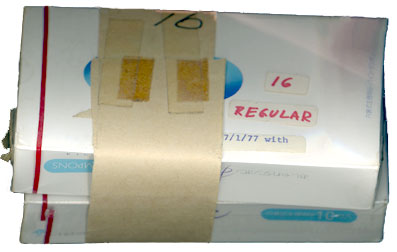 |
Below: The
cellophane wrapping reveals itself by the shadows cast from
the upper labels.
Did Tambrand operatives - Tamhands, if you
will or even if you won't - write on and
stick the labels?
The red band
rrrrips off to open the cellophane.
|
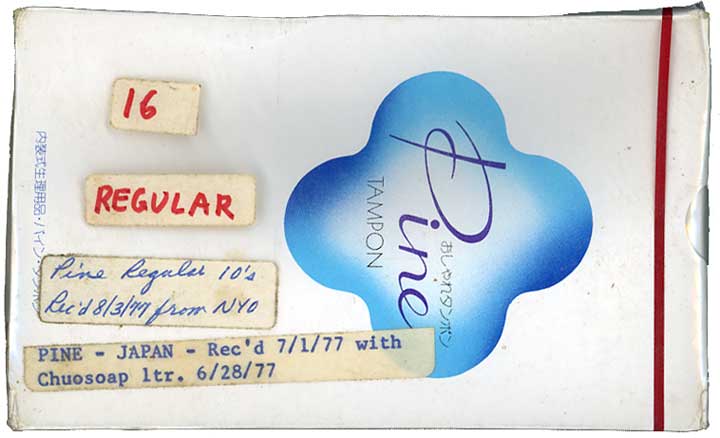 |
Below: At far
left on the above box sits (on its tail)
this combination of Japanese
kana characters
(snatched from the Chinese about 2000 years
ago to give the Japanese their first
writing) - the first
seven characters, at left - and katakana, the
phonetic script Japanese use for foreign
words as here for
the sound of "Pine tampon." Katakana
developed from kana long ago.
The whole thing reads
Internal--use
menstrual product [American tampons
have said this since
the beginning - and here]
Pine tampon.
|
 |
Below: A
combination of the other phonetic script,
hiragana - the first four characters -
and katakana. The hiragana sounds out the
Japanese word
oshare [a MUM
visitor corrected my pronunciation &
reading to mean fashionable, stylish, or
smart]
and the katakana sounds out the English word
tampon
So Pine is a tampon that's fashionable.
|
 |
Below: The
other large side of the box.
|
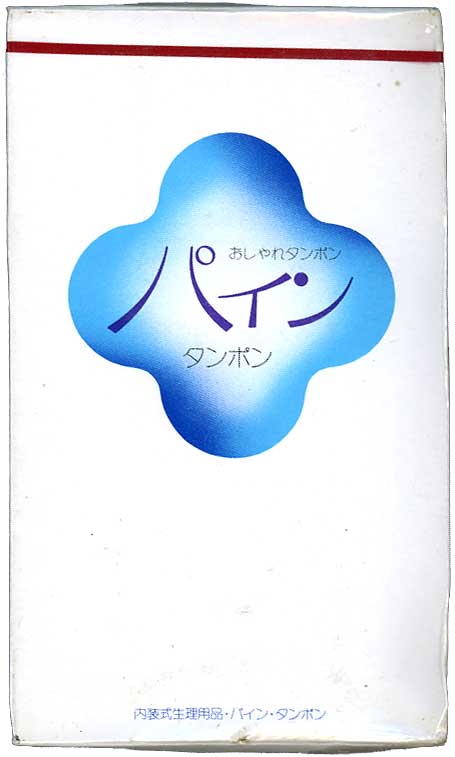 |
Below, two pictures:
the sides of the box.
Japanese has its own number characters that
can often be - no surprise here! - pronounced
in different ways. But they also
use Western numbers when it suits them.
Mysterious Japan!
Someone once wrote that Japanese is the most
unnecessarily difficult language. The
Japanese journalist
grandfather of a friend suggested to the
American occupiers of Japan right after WWII
that the
country adopt English as its language. But
Japanese would lose thousands of years of
written culture.
And they like being different and
inscrutable.
|
 |
 |
Below: The
first two characters of the tiny string of kana
on the left side of the box beginning at the
red band is the
end of my
translation attempts (well, almost): the
first one means river,
the second tree,
root, book,
this, or the unit (counter) for cylinders
(like tampons); one possible
pronunciation of the combination
is KAWAMOTO, the
company name written in Western script
under the blue logo at far left that I
enlarged below.
The Japanese language is infamously
ambiguous.
The line reads
KAWAMOTO BANDAGE CORPORATION
Interesting,
isn't it, that both Johnson & Johnson and Kimberly-Clark made bandages as well as
menstrual supplies? Kotex allegedly started
out as a bandage for American soldiers in
World War I.
Emergency medical crews sometimes use it
as a bandage today. When it was possible
to rummage through
the actual boxes of patents in the U.S.
Patent Office - can you today? - the
menstrual pads, tampons,
belts and panties were in the bandage
section.
Both deal with wounds, one in the womb.
|
 |
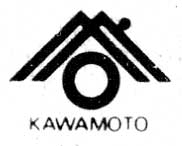 |
Below: The address of the
company. The first two kana mean the city Osaka. O - the first character -
is usually interpreted as a man with
outstretched arms and means big.
Of course, Chinese
invented most of these characters,
although the Japanese devised the phonetic
scripts
and borrowed the kanji from the Chinese. The
underlying languages are very different.
|
 |
Below, two pictures: The
ends. The box cost 220 yen.
|
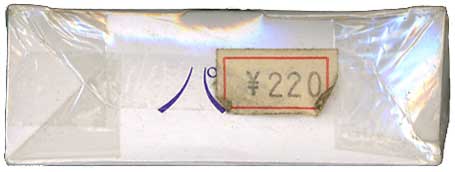 |
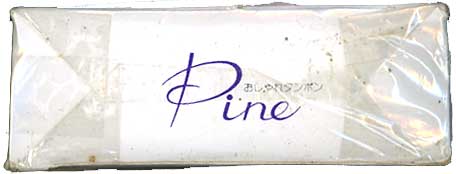 |
© 2009 Harry Finley. It is illegal to reproduce or
distribute any of the work on this Web site
in any manner or medium without written permission of
the author. Please report suspected
violations to hfinley@mum.org\
|